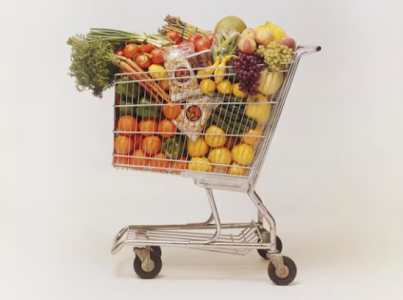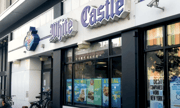Could online grocery shopping be the secret to healthier eating and saving money? Here's what new research says
- Replies 0
If you’ve ever found yourself staring at an empty fridge, dreading the trek to the grocery store, or wishing you could get fresh produce delivered right to your door—especially if you’re on a tight budget—you’re not alone.
For many Americans, especially those living in neighborhoods where healthy food options are few and far between, getting nutritious groceries can feel like an uphill battle.
But what if the solution was as simple as a few clicks on your computer or smartphone?
A new wave of research is shining a spotlight on online grocery shopping, and the results are promising—especially for families using Supplemental Nutrition Assistance Program (SNAP) benefits.
Let’s dig into what the latest study reveals, why it matters, and how it could change the way we all shop for food.
Online grocery shopping isn’t just a modern convenience for busy families or those who’d rather avoid crowded aisles.
For people living in “food deserts”—areas where affordable, healthy food is hard to find—it can be a lifeline. When SNAP benefits were expanded to cover online purchases, it opened up a world of possibilities.
Suddenly, families who once had to rely on corner stores or long bus rides to supermarkets could order fresh fruits, vegetables, and pantry staples from the comfort of home.
But there was a catch: Early research showed that SNAP families shopping online weren’t necessarily filling their carts with more fruits, veggies, or legumes.
In fact, healthy purchases lagged behind expectations. Why? Barriers like delivery fees, lack of trust in online shoppers to pick good produce, and simply not knowing how to use these services kept many from reaping the full benefits.

Enter a team of nutrition researchers from NYU Steinhardt, led by Dr. Angela Trude.
They wanted to know: Could targeted incentives help families overcome these hurdles and make healthier choices online?
They launched a pilot program in the Bronx, inviting 59 caregivers of young children to participate.
The group was split into four “test kitchens” of sorts, each receiving a different combination of incentives:
Also read: Amazon Prime members are getting free same-day groceries—here’s how to snag yours too
The findings, published in the Journal of Nutrition Education and Behavior, are encouraging:
Also read: Are you missing out? Discover the best grocery receipt scanning apps to beat inflation and save big!
Dr. Trude and her team aren’t stopping here. They’re working with the National Institutes of Health, community organizations, retailers, and policymakers to test even bigger interventions.
The goal? To find the most effective, affordable, and scalable ways to boost food and nutrition security for all Americans.
This research is part of a broader movement to close the “nutrition gap” and ensure everyone—regardless of zip code or income—can access the foods they need to thrive.
It’s about more than just filling bellies; it’s about supporting long-term health, independence, and dignity.
Read next: Fresh food shouldn’t be a luxury: How one program is helping seniors eat healthier

Have you tried online grocery shopping? What was your experience—good, bad, or somewhere in between? Do you have tips for making healthy choices on a budget, or questions about using SNAP online?
For many Americans, especially those living in neighborhoods where healthy food options are few and far between, getting nutritious groceries can feel like an uphill battle.
But what if the solution was as simple as a few clicks on your computer or smartphone?
A new wave of research is shining a spotlight on online grocery shopping, and the results are promising—especially for families using Supplemental Nutrition Assistance Program (SNAP) benefits.
Let’s dig into what the latest study reveals, why it matters, and how it could change the way we all shop for food.
Online grocery shopping isn’t just a modern convenience for busy families or those who’d rather avoid crowded aisles.
For people living in “food deserts”—areas where affordable, healthy food is hard to find—it can be a lifeline. When SNAP benefits were expanded to cover online purchases, it opened up a world of possibilities.
Suddenly, families who once had to rely on corner stores or long bus rides to supermarkets could order fresh fruits, vegetables, and pantry staples from the comfort of home.
But there was a catch: Early research showed that SNAP families shopping online weren’t necessarily filling their carts with more fruits, veggies, or legumes.
In fact, healthy purchases lagged behind expectations. Why? Barriers like delivery fees, lack of trust in online shoppers to pick good produce, and simply not knowing how to use these services kept many from reaping the full benefits.

That shift opened doors for people who once relied on limited food choices nearby. Image source: Getty Images / Unsplash
Enter a team of nutrition researchers from NYU Steinhardt, led by Dr. Angela Trude.
They wanted to know: Could targeted incentives help families overcome these hurdles and make healthier choices online?
They launched a pilot program in the Bronx, inviting 59 caregivers of young children to participate.
The group was split into four “test kitchens” of sorts, each receiving a different combination of incentives:
- Free delivery only (because who likes extra fees?)
- Dollar matching for fruits, veggies, and legumes (plus free delivery)
- Weekly text tips for online shopping (plus free delivery)
- Meal plans and grocery lists (plus free delivery)
Also read: Amazon Prime members are getting free same-day groceries—here’s how to snag yours too
The findings, published in the Journal of Nutrition Education and Behavior, are encouraging:
- Nearly half (47%) of participants created an online grocery account after joining the program.
- Before the intervention, families spent about 20% of their grocery budget on fruits, vegetables, and legumes. Afterward, that number nudged up to 21.6%. It might sound small, but even a modest increase in healthy food purchases can make a real difference over time.
- Most importantly, participants reported a measurable decrease in food insecurity—a 0.6-point drop on the USDA’s assessment tool. That means more families felt confident they could put enough food on the table.
Also read: Are you missing out? Discover the best grocery receipt scanning apps to beat inflation and save big!
Dr. Trude and her team aren’t stopping here. They’re working with the National Institutes of Health, community organizations, retailers, and policymakers to test even bigger interventions.
The goal? To find the most effective, affordable, and scalable ways to boost food and nutrition security for all Americans.
This research is part of a broader movement to close the “nutrition gap” and ensure everyone—regardless of zip code or income—can access the foods they need to thrive.
It’s about more than just filling bellies; it’s about supporting long-term health, independence, and dignity.
Read next: Fresh food shouldn’t be a luxury: How one program is helping seniors eat healthier
Key Takeaways
- Incentives such as free delivery, dollar-matching on fruits and vegetables, and tailored text messages helped families in low-income urban areas buy more healthy foods when shopping online.
- The pilot program saw nearly half of participating caregivers create an online grocery account, leading to a small but positive increase in their household spending on fruits, vegetables, and legumes.
- Participants reported feeling more food secure after the program, with many rating elements like video tutorials, grocery lists, and delivery fee waivers as especially useful.
- Researchers are hopeful these promising results will guide the rollout of larger programs and inform policymakers on affordable, scalable ways to improve healthy food access for families using online grocery shopping.






